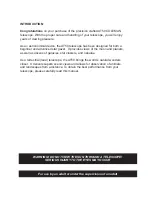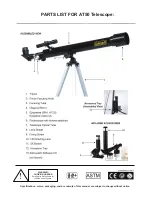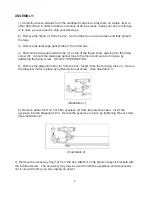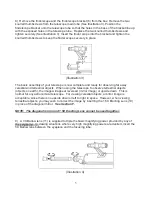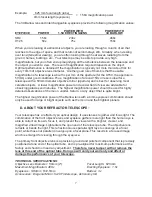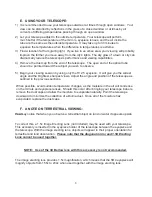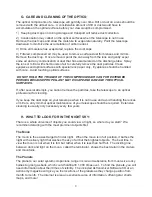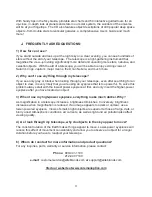
7
Example: _ 625 mm focal length (tube)__
4mm focal length (eyepiece)
The 3X Barlow lens and interchangeable eyepieces provide the following magnification values:
POWER WITH POWER WITH
EYEPIECE POWER 1.5X ERECTINGLENS
3X BARLOW
SR4 156x 234x 468x
H12.5 50x 75x 150x
When you are looking at astronomical objects, you are looking through a column of air that
reaches to the edge of space, and that column of seldom stays still. Similarly, when viewing
over land (terrestrial viewing), you are often looking through heat waves radiating from the
ground, homes, buildings, etc. Your telescope may be able to provide very high
magnifications, but you often end up magnifying all the turbulence between the telescope and
the object you wish to view. The level of magnification required depends on the object
Optimal performance is obtained if the magnification is typically not more than about 30x for
every 10mm of objective lens diameter. Another good rule of thumb is that the usable
magnification of a telescope is about 3x per mm of the aperture (for the AT50, the aperture is
50mm) under good conditions. Thus, magnification of around 150x or less is ideal for a
telescope with a 50mm diameter objective mirror (aperture) and is best for observing most
celestial objects. A lower magnification power and a wider field of view are advisable for
observing galaxies and nebulae. The highest magnification power should be used for highly
detailed observations of the moon, Jupiter, Saturn, or any object that is quite bright.
The highest magnification power of the Barlow lens with a 4mm eyepiece combination should
only be used for large or bright objects such as the moon and the brightest planets.
D. ABOUT YOUR REFRACTOR TELESCOPE:
Your telescope has a refractor type optical design. It uses lenses to gather and focus light. The
combination of the front objective lens and eyepiece gathers more light than the human eye is
able to collect on its own, focus it, and present the viewer with a brighter, clearer, and
magnified virtual image. Light enters the open end of the telescope tube. The objective lens
refracts or bends the light. This refraction causes parallel light rays to converge at a focal
point, while those not parallel converge upon a focal plane. This results in a focused image
which is enlarged for viewing through the eyepiece.
The primary front objective lens is a precision ground and polished component that is precisely
positioned at one end of the optical tube, and is pre-aligned for maximum performance at the
factory and should not need any adjustment.
Therefore, never tamper with or remove the
lens at this end of the optical tube. Doing so will void your warranty and affect or
damage the performance of your telescope.
TECHNICAL SPECIFICATIONS:
Objective Lens Diameter: 50mm (2”)
Focal Length: 625mm
Maxumum Magnification: 468x
Erecting Eyepiece: 1.5x
Eyepieces: SR4mm, H12.5mm
Barlow: 3x
Accessories: Diagonal Mirror, 5x20 Finderscope, Astronomy CD
= 156X magnification power


